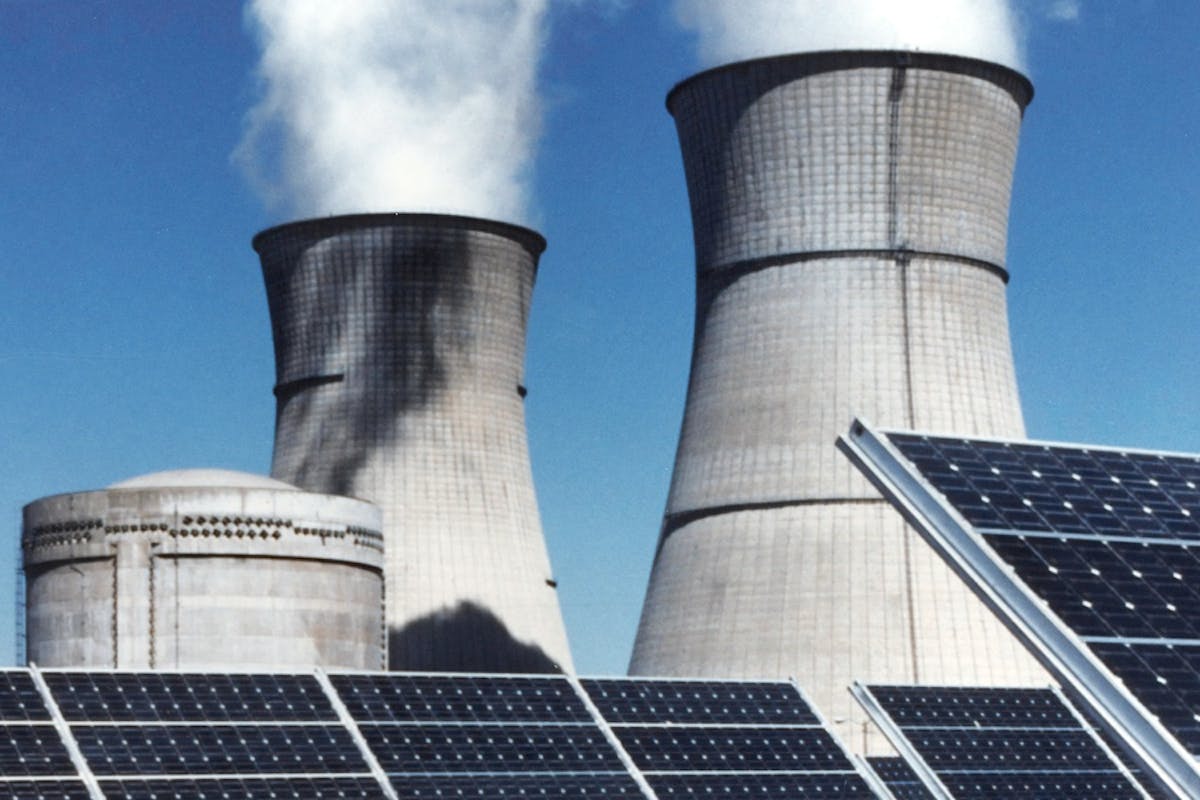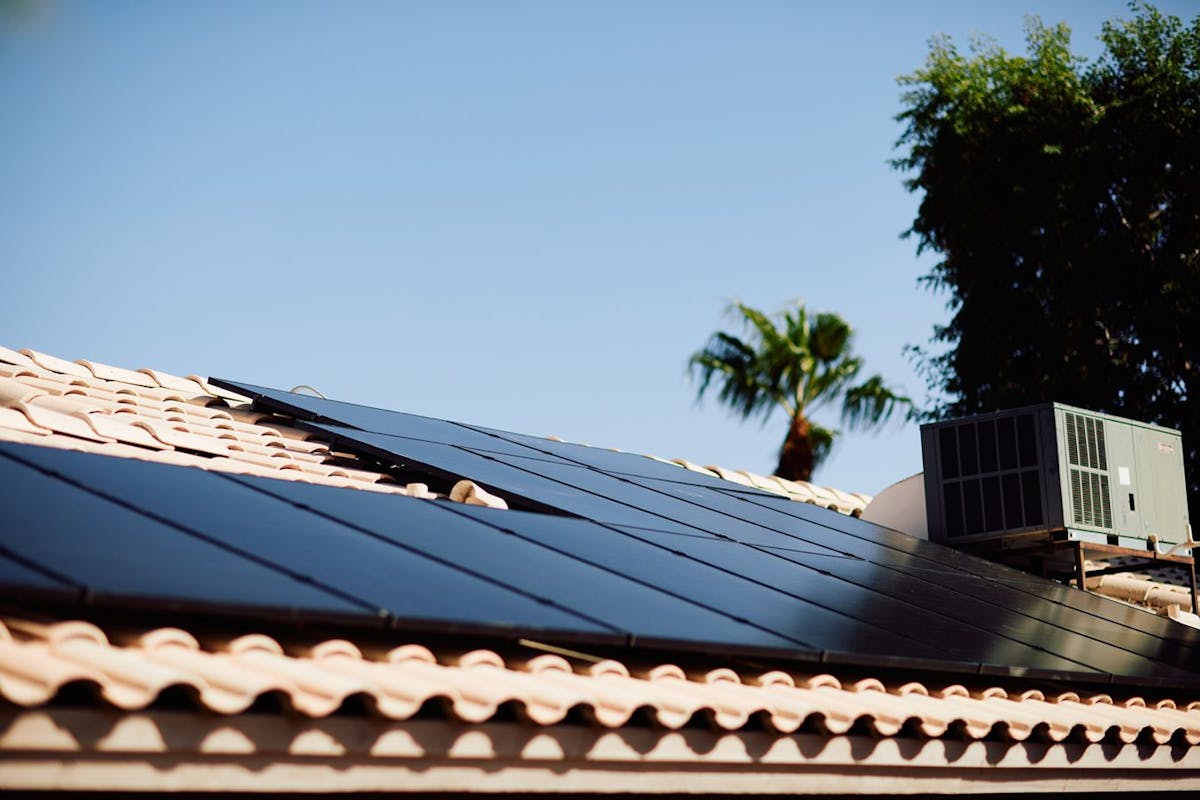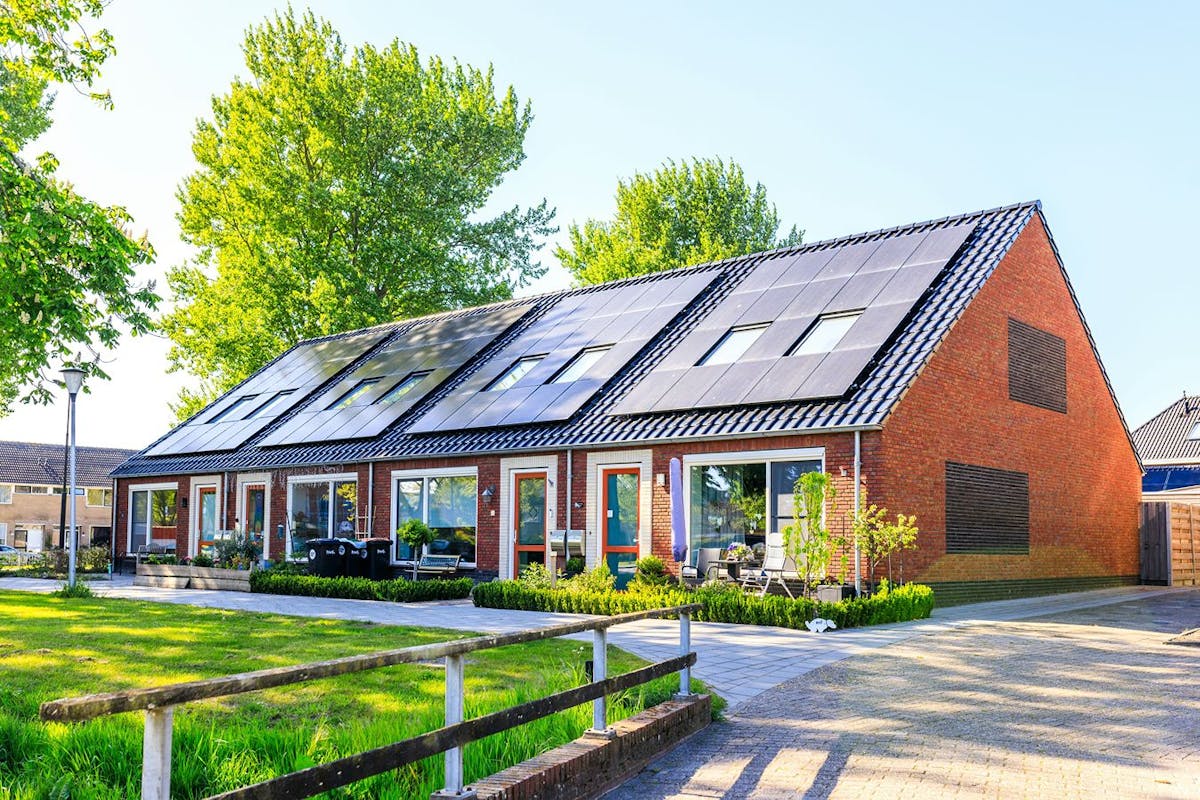What Is Solar Energy? How it Can Power Your Home
Last edited

Author
Andrew Giermak
Solar and Electrification Writer and Editor

Editor
Andrew Blok
Electrification and Solar Writer and Editor

Solar energy is entirely natural, free, and perhaps the most abundant energy source on Earth. For starters, it makes all life possible. It grows trees, provides heat, and is increasingly being used to generate electricity we need for our modern life.
But what is solar energy? And, how do we go from solar energy to electricity for a TV? How does solar energy compare to other energy sources we use? Here’s how home solar panels take solar energy and generate electricity.
See how much you can save by going solar with Palmetto
Solar Energy: What it Is and Isn’t
Solar energy is radiation emitted from the sun. Solar energy keeps Earth at a livable temperature, creates weather that provides rain and snow, gets converted into chemical energy by plants, and more. Solar energy is made of photons, or tiny particles of energy that travel at the speed of light, contain no mass, and flow in waves.
The sun’s core produces approximately 380 septillion Joules of energy per second or 380 septillion watts of power! A septillion is a trillion trillion, or a 1 followed by 24 zeros—a BIG number! The amount of solar energy that reaches Earth in an hour could provide all the electricity humans use for the entire year.

Credit: Pexels/Pixabay
Solar energy is not electricity. Solar energy has the potential to create electricity when harnessed in the right way. Solar panels convert sunlight into electricity.
How Is Solar Energy Produced?
Stars are giant nuclear reactors. Our sun has a 27 million-degree Fahrenheit core with nuclear fusion smashing hydrogen atoms together to form helium molecules, creating a whole lot of energy.
That energy radiates to the sun's outer layers and across our solar system as light and heat. This energy covers the entire electromagnetic spectrum, from high-energy X-rays to ultra-long-wavelength radio waves.
Though electromagnetic radiation comes in many different forms, 99% of the rays from the sun reach the Earth as visible sunlight, ultraviolet rays, and infrared rays (aka “heat”). While the nuclear fusion process within the sun takes thousands of years, sunlight only takes 8.5 minutes to travel to the surface of the Earth.
How Is Solar Energy Collected?
There are two main ways to collect solar energy from the sun: photovoltaics (PV) and concentrating solar-thermal power (CSP).
Photovoltaic solar power
The most widely known solar energy technology is photovoltaic panels which turn light into electricity. Photovoltaic solar panels capture energy through sunlight and the photovoltaic process.
Concentrating solar-thermal power
Concentrating solar-thermal power uses mirrors to reflect sunlight onto a receiver, concentrating the sun’s power. This concentrated sunlight heats a fluid to high temperatures, and that thermal energy spins a turbine that generates electricity. It can be used for industrial applications like chemical production, water desalination, food processing, and mineral processing.
Solar water heaters
Solar energy can also be used to heat water with special solar thermal collectors. There are many types of solar hot water systems.
How Does Sunlight Generate Electricity?
To generate electricity from sunlight, the sun's photons must be collected and converted into a usable form. This ability to create energy from sunlight is known as the “photovoltaic effect.”
How is solar energy generated? The photovoltaic effect occurs when sunlight strikes the thin silicon layer within a solar panel and knocks electrons free. Solar cells, the individual parts that make up a solar panel, have a positive side and a negative side, so once negatively charged electrons are free, they naturally seek out the positively charged protons to connect.
The attraction of negatively charged electrons and positively charged protons makes solar power possible. This flow of charged particles from one side of the solar cell to the other is known as current, and in this case, direct current (DC) electricity.
The more sunlight that strikes a solar panel, the more electrons that get knocked free, and thus, the more current the panel generates. Solar panels can convert solar energy into electricity most efficiently when sunlight hits them at direct angles. That angle is influenced by the slope of installation as well as the time of day and position of the sun.
How Is Solar Electricity Used in a Home?
After solar energy is turned into DC electricity, it’s converted into alternating current (AC) electricity that powers most electronics in your home. That’s the job of a solar inverter. There are different types of inverters such as string inverters, microinverters, hybrid inverters, and power optimizers.
Once the electricity goes through an inverter, it can be directly used by everything that uses electricity in your home. It can also go into a storage battery or go to the utility company’s electric grid, particularly if you have net metering available to you.
See how much you can save by going solar with Palmetto
How Does Solar Energy Output Compare to Fossil Fuels?
Solar energy is one part of the cleaner, cheaper energy that’s increasingly common on the grid. What are the differences between the two?

Credit: US Energy Information Administration
Sunlight is a nearly unlimited resource (unless you’re around when the sun burns out). Fossil fuels, on the other hand, will eventually run out and can’t be easily renewed.
Solar panels are a zero-emission electricity source, making them a key cog in addressing the threat of climate change. Mining, transporting, and burning fossil fuels are responsible for the vast majority of historic and ongoing carbon emissions responsible for global warming.
Besides the larger threats represented by climate change, burning fossil fuels can pose health risks to individuals. Solar panels don’t burn anything to make electricity, so they don’t release combustion-related emissions.

Credit: National Renewable Energy Laboratory
How Does Solar Power Cost Compare to Other Energy Production Forms?
For individual homeowners, the cost of solar depends on many factors, including system size, home location, financing options, equipment costs, available incentives, rebates, and more. Nationally, the cost of installing home solar panels averages around $3.36/watt as of September 2025, though the cost in your state may be actually much lower.

Credit: Solar Energy Industries Association
On the surface, comparing the cost of solar power with other energy forms can be difficult. Solar has high upfront costs but little to no ongoing expenses, whereas fossil fuels have more ongoing costs.
According to the US Energy Information Administration (EIA), the average price of residential grid-supplied electricity was 17.47cents/kWh in June 2025. The EIA also reports the average American home consumes about 900 kilowatt hours (kWh) per month. This means that, on average, US homes spend over $1,886 per year (or about $157 every month) on electricity bills, which solar panels can help reduce. There’s no similar at-home solution for a high gas bill.
In 2009, electricity from utility-scale solar was $496 per megawatt-hour (MWh), or $0.496 per kWh. By 2024, the cost of utility-scale solar had dropped by 88% to $60 per MWh.
How to Add Solar Power to Your Home
Adding solar power to your home can help offset monthly utility costs, allowing you to save thousands of dollars over the lifetime of your energy system. See what home solar panels can do for you. Start now by getting an estimate for your home.
See what solar can do for you:
Frequently Asked Questions
What is the easiest definition of solar energy?
Solar energy is energy that comes from the sun. You can use solar energy to passively warm your home, heat water, and generate electricity for power.
What are the pros and cons of solar energy?
Solar energy is a sustainable source of power that does not emit harmful pollutants while generating electricity. It is likely to reduce your home energy costs. Solar power does not generate electricity at night and might have reduced generation during the winter or long periods of cloudy weather. You can get around that drawback with a solar battery or by connecting to the grid.
Is solar energy light or heat?
It’s both! Solar energy can be harnessed as sunlight or heat to produce electricity. While the large majority of solar panels on homes and buildings use photovoltaic technology to harness sunlight, concentrating solar power systems can also capture the Sun’s thermal energy to produce electricity.
Disclaimer: This content is for educational purposes only. Palmetto does not provide tax, legal, or accounting advice. Please consult your own tax, legal, and accounting advisors.


